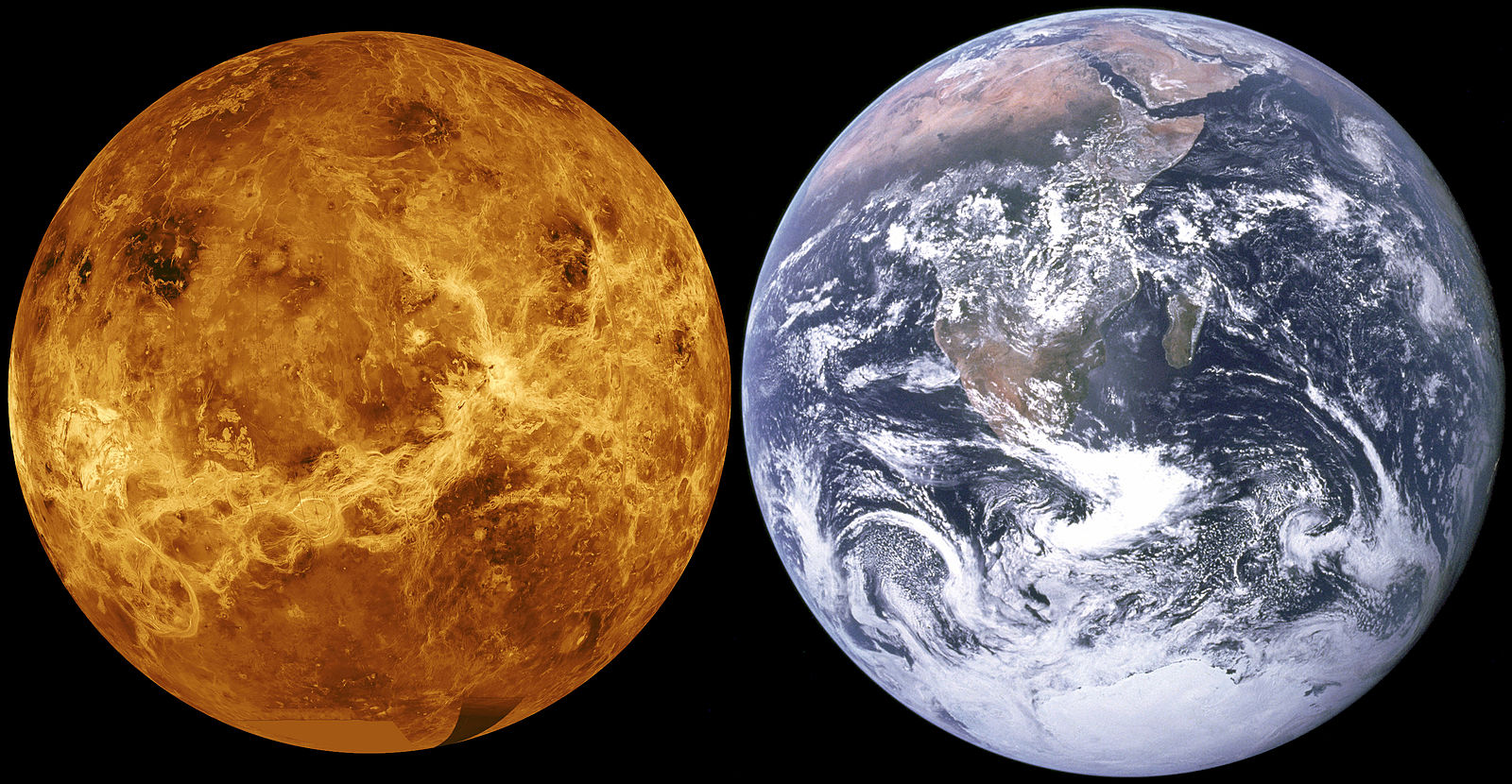Part 1 of 2 parts.
Venus is the second planet from the sun in our solar system. Its year is about two hundred and twenty-four days. Venus is similar to the Earth in terms of size, mass and bulk composition. In other ways, it is very different than the Earth. It has the densest atmosphere of the four Earth-like planets; Mercury, Venus, Earth, and Mars. Ninety six percent of the atmosphere is carbon dioxide. The pressure of the atmosphere at the surface is ninety-two times as dense as the atmosphere at the surface of the Earth. Venus is also the hottest planet in the solar system with a surface temperature of about eight hundred and sixty-three degrees Fahrenheit. The surface of Venus is obscured by clouds of sulfuric acid. It may have had oceans of water in the past but they would have evaporated in the run-away greenhouse environment. The surface is a dry desert with some slab-like rock.
The last NASA mission to Venus was in 1989. There have been European, Japanese and Soviet missions to Venus. Most of these missions were just orbital but in the 1980s, the Soviet Union sent a series of landers covered in heavy armor to resist the harsh environment. The last such lander was sent in 1985 and only endured for a few hours on the surface before being destroyed by the pressure and temperature.
For many years, it was thought that the surface of Venus was static for long periods of time, occasionally punctuated by huge volcanic eruptions that essentially repaved large areas of the surface. However, recent probes with new equipment that could better penetrate the cloudy atmosphere to yield new details about the surface suggests that the surface is much more active on an ongoing basis than the earlier models.
NASA has a special program for exploring speculative technologies for use in space exploration called the New Frontiers program. This year there are three entries for mission to Venus. They face intense competition for other projects like going back to Saturn to look for life on the moons Enceladus and Titan.
The first two Venus missions would drop a pressure-vessel to the surface of Venus. Each would monitor the chemistry of the atmosphere on the way down. Once on the surface, each would spend its few hours of life using a laser or a mechanical drill to take samples of rocks on the surface. One of the big questions they are seeking to answer is whether or not Venus may have started with the same amount of water that Earth did.
The third proposed project for the New Frontiers Missions would just have a probe that dived in and out of the atmosphere for the analysis of atmospheric chemistry. The high-resolution radar on the probe would be able to penetrate the atmosphere far better than the old probes to return highly detailed images of the surface. It is hoped that these detailed pictures might be able to answer questions about the processes that shaped and are shaping the surface of Venus.
Scientists believe that missions to Venus could return valuable information about the development of the current environment on Earth and how Venus evolved into its hellish environment. Venus is the only other planet in the solar system that is similar enough to the Earth to answer some of these questions.
Please read Part 2
Venus, Earth size comparison:
